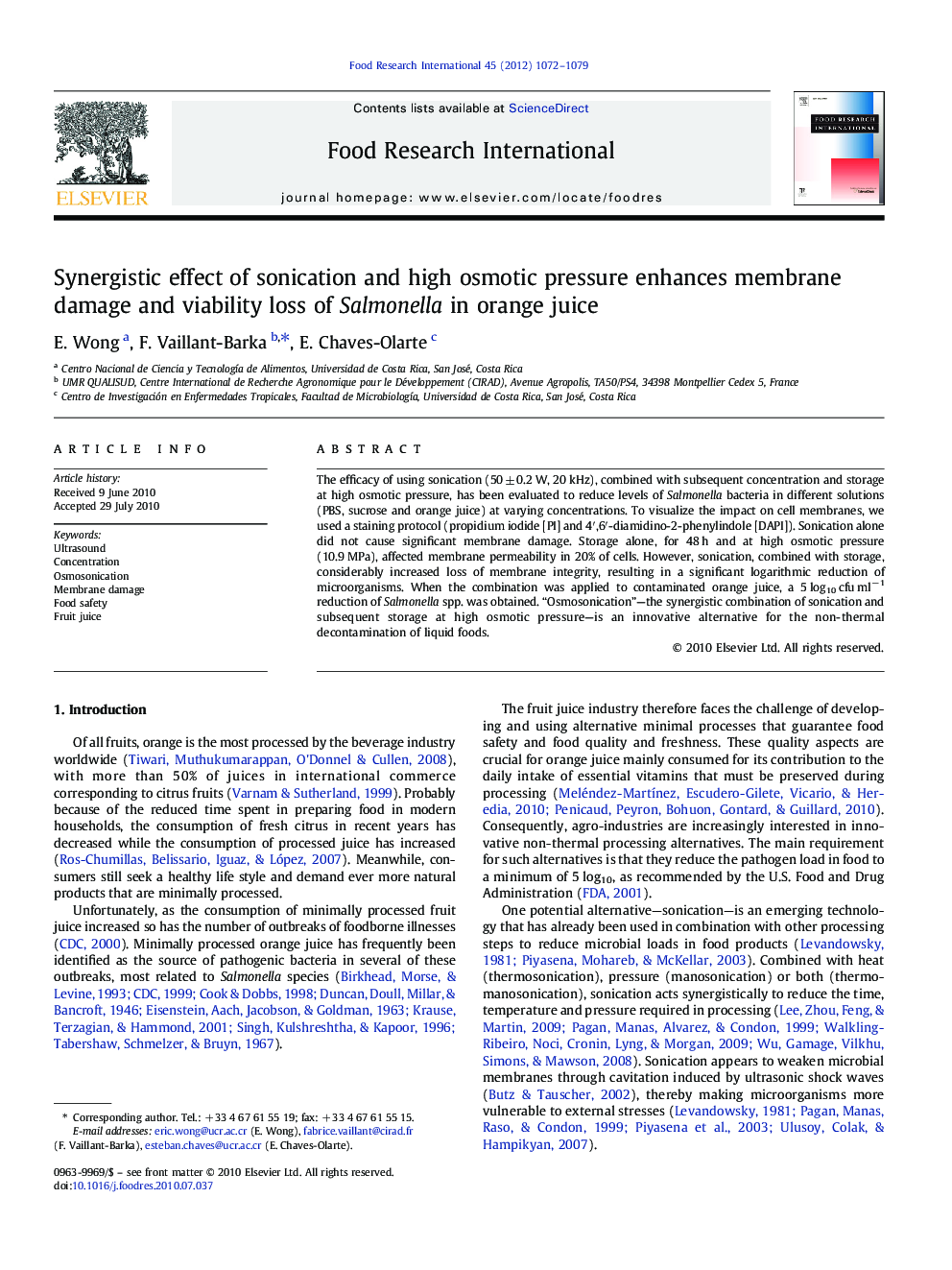| Article ID | Journal | Published Year | Pages | File Type |
|---|---|---|---|---|
| 4561771 | Food Research International | 2012 | 8 Pages |
The efficacy of using sonication (50 ± 0.2 W, 20 kHz), combined with subsequent concentration and storage at high osmotic pressure, has been evaluated to reduce levels of Salmonella bacteria in different solutions (PBS, sucrose and orange juice) at varying concentrations. To visualize the impact on cell membranes, we used a staining protocol (propidium iodide [PI] and 4′,6′-diamidino-2-phenylindole [DAPI]). Sonication alone did not cause significant membrane damage. Storage alone, for 48 h and at high osmotic pressure (10.9 MPa), affected membrane permeability in 20% of cells. However, sonication, combined with storage, considerably increased loss of membrane integrity, resulting in a significant logarithmic reduction of microorganisms. When the combination was applied to contaminated orange juice, a 5 log10 cfu ml−1 reduction of Salmonella spp. was obtained. “Osmosonication”—the synergistic combination of sonication and subsequent storage at high osmotic pressure—is an innovative alternative for the non-thermal decontamination of liquid foods.
